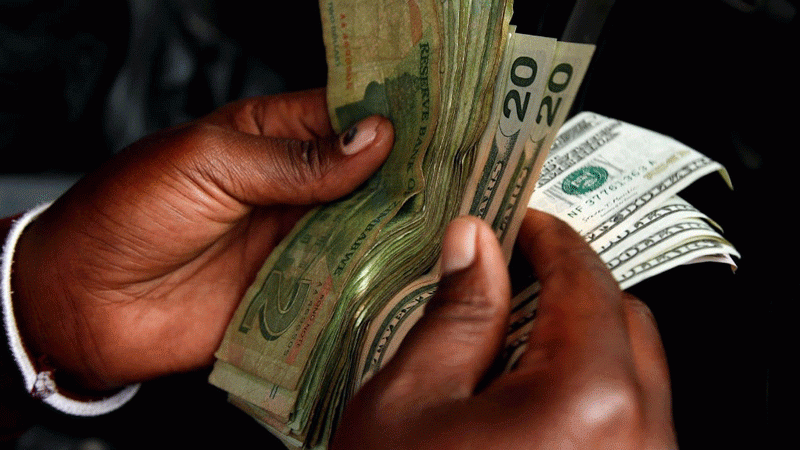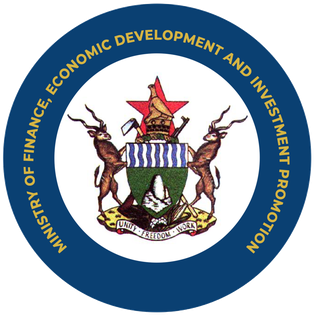
SINCE United States 37th President Richard Nixon abolished the gold exchange standard on August 15, 1971, the world has been running on fiat currency.
The world has been awash in paper money since then with devastating effects on world economies and rendering the populace poorer by each passing day.
Fiat currency or paper currency gets its value from a government edict and compulsory legal tender laws.
The Collins dictionary (1978) defines fiat as an order issued by legal authority or decree. Honest money is, however, something of real value, like a precious metal.
It gets its value from the market and through voluntary exchange. Fiat currency works as long as trust in the currency lasts. But eventually trust is always withdrawn from paper currency.
Paper currency will inevitably fail no matter how hard the beneficiaries try to perpetuate it. Fiat currency is not real money, but gold is real money.
Although fiat currency is widely accepted thanks to legal tender laws, it does not maintain its purchasing power.
This works to the disadvantage of ordinary people who lose the purchasing power of their savings, pensions, annuities, and other promises of future payments. Then what is money and what constitutes money?
- ‘Inflation could shoot to 700% by April next year’
- New perspectives: Inflation control critical for economic growth
- Inflation spike: Why interest rates aren’t the answer
- Village Rhapsody: Govt must ensure that devolution works
Keep Reading
According to Maune (2023) in an article entitled Gold and currency stability, money is defined as a coin or coins: sometimes known as hard money.
Money is defined as bits of gold, silver, copper, etc, that have been stamped by a government authority and are used as a means of exchange. Mises states that, money like any other commodity has a marginal utility, and its value is set subjectively.
Money as a commodity must have a quality to it, and consumers must trust the money for it to function, something increasingly absent today.
In his book The New Case for Gold, James Rickards makes the case that the traditional definition of money includes the terms medium of exchange, store of value and unit of account.
In a 2013 in-depth study of the 118 elements of the periodic table by Andrea Sella, a chemistry professor at University College London, gold and silver were found to be the only metals that qualify to be used as real money because of their properties.
It is gold and silver that could be used to create a reliable form of money. Biblically, gold and silver were the only metals that were mentioned as mediums of exchange since human beings started to trade with each other.
However, the advent of fiat currency ushered in a new era of financial distortions and hyperinflation that were never witnessed during the gold exchange standard.
The fiat currency era has seen rampant currency creation and manipulation by central and commercial banks among other entities that has seen the erosion of purchasing power of currencies.
The biggest challenge is that these fiat currencies the world over are backed by nothing. But what is currency creation?
Currency creation
The vast majority of money held by the public takes the form of bank deposits. But where the stock of bank deposits comes from is often misunderstood by the public.
Broad money is a measure of the total amount of money held by households and companies in the economy. Broad money is made up of bank deposits and currency.
Bank deposits are essentially IOUs from commercial banks to households and companies and currency is mostly IOUs from the central bank. Bank deposits make the vast majority of the two types of broad money, that is, 97% of the amount currently in circulation.
In the modern economy, these bank deposits are mostly created by commercial banks themselves.
Viewing banks as intermediaries ignores the fact that commercial banks are the creators of deposit money in the modern economy.
Commercial banks create money in the form of bank deposits by making new loans. When a bank makes a loan, for example, to someone taking out a mortgage to buy a house, it does not typically do so by giving them thousands of dollars worth of bank notes.
Instead, it credits their bank account with a bank deposit of the size of the mortgage. At that moment, new money is created.
For this reason, some economists have referred to bank deposits as ‘fountain pen money’, created at the stroke of bankers’ pens when they approve loans. But they are far from the only ways.
Deposit creation or destruction will also occur anytime the banking sector (including the central bank) buys or sells existing assets from or to consumers, or, more often, from companies or the government.
When banks purchase government bonds from non-bank private sector they credit the sellers with bank deposits. And, central bank asset purchases, known as quantitative easing (QE), have similar implications for money creation.
It is a common misconception that the central bank determines the quantity of loans and deposits in the economy by controlling the quantity of central bank money, the so-called “money multiplier” approach.
One possible way of providing further monetary stimulus to the economy is through a programme of asset purchases, that is QE.
Like reductions in bank rate, asset purchases are a way in which the Monetary Policy Committee can loosen the stance of monetary policy in order to stimulate economic activity and meet its inflation target.
But the role of money in the two policies is not the same. QE involves a shift in the focus of monetary policy to the quantity of money: the central bank purchases a quantity of assets (from pension funds and other asset managers) with commercial banks as intermediaries, financed by the creation of broad money and a corresponding increase in the amount of central bank reserves.
The sellers of the assets will be left holding the newly created deposits in place of government bonds. QE has a direct effect on the quantities of both base and broad money because of the way in which the bank carries out its asset purchases.
The policy aims to buy assets, government bonds, mainly from non-bank financial companies, such as pension funds or insurance companies. Consider, for example, the purchase of US$1 billion of government bonds from a pension fund.
One way in which the bank could carry out the purchase would be to print US$1 billion of bank notes and swap these directly with the pension fund. But transacting in such large quantities of bank notes is impractical. These transactions are, therefore, carried out using electronic forms of money.
Limitations to money creation by commercial banks
Nobel Prize winning economist James Tobin discussed three limits to money creation by banks. The three main sets of constraints that restrict money creation by banks in the modern economy are as follows:
(i) Banks themselves face limits on how much they can lend. Market forces constrain lending because individual banks have to be able to lend profitably in a competitive market.
Lending is also constrained because banks have to take steps to mitigate the risks associated with making additional loans.
Regulatory policy acts as a constraint on banks’ activities in order to mitigate a build-up of risks that could pose a threat to the stability of the financial system.
(ii) Money creation is also constrained by the behaviour of the money holders, that is, households and businesses.
(iii) The ultimate constraint on money creation is monetary policy.
Effects of currency creation
Today’s economic challenges reflect the devastating effects of currency creation and manipulation or a fiat monetary system that has been followed by monetary authorities long before independence in 1980.
In fact these are consequences of the abolishment of the gold standard by Richard Nixon in 1971. Without sound money, there is no protection for savings and property, capital accumulation, long-term investment, entrepreneurship, and social advance.
Without the right to own and control property, people have no real say over their lives.
In contrast, honest money allows credit to be freely created on the market and not by the privileged banking cartel, but controlled by the integrity of the market and the convertibility of the currency.
It is important for people to know and to understand how we got to where we are right now economically.
The blind faith that wealth and capital can be created by the central bank’s creating money and credit out of thin air, using government debt as its collateral, along with fixing short-term interest rates, is a myth that must one day be dispelled.
Revealing to the public the fraud associated with all fiat currencies would cause loss of credibility of all central banks.
This knowledge would jeopardise the central banks’ ability to perform the role of lender of last resort and to finance/monetise government debt.
It is for this reason that the price of gold in their eyes must be held in check and the reason why there is talk of central bank digital currencies back by gold the world over.
Maune, Mundonde and Matanda (2020) in their article titled Is money supply the cause of inflation in Zimbabwe? An empirical examination, published by Acta Universitatis Danubius, Œconomica, found a correlation between money supply and inflation.
There is much more to inflation than rising prices. Inflation is defined as the increase in the supply of money and credit. Creating money out of thin air is morally equivalent to counterfeiting.
It is considered fraud and theft, because it steals purchasing power from the savers and those on fixed incomes. Inflation is socially disruptive in that the management of fiat currency causes great hardships.
Unemployment is a direct consequence of the constantly recurring recessions. Persistent rising costs impoverish many as the standard of living of people is eroded.
The pain and suffering that comes from monetary debasement is never evenly distributed, certain segments of society actually benefit.
Champions of fiat currency discredit gold as money hence the inflationary pressures that are being witnessed the world over.
The engines of inflation throughout the world are running at full throttle, struggling to keep the debt pyramid from collapsing. True capital formation is diminished yearly.
Fiat currency and excessive credit creates financial bubbles and economic cycles as well as undermining the value of the currency with serious consequences to the economy.
This causes markets to disintegrate. Currency creation has caused the real depreciation of the value of currencies causing rampant inflation of the money supply.
In summary, most of the money in circulation is created, not by the printing presses of the central bank, but by the commercial banks themselves: banks create money whenever they lend to someone in the economy or buy an asset from consumers.
The central bank is nevertheless still able to influence the amount of money in the economy.
Currency creation and manipulation has caused hyperinflation in many countries since the replacement of the gold exchange standard in 1971 by fiat currencies. This has negatively affected the power of consumers.
- Alexander Maune (PhD) is an IoDZ member as well as a Talmudic and Zoharic expert, lecturer, researcher, and consultant. Mailto: [email protected].











